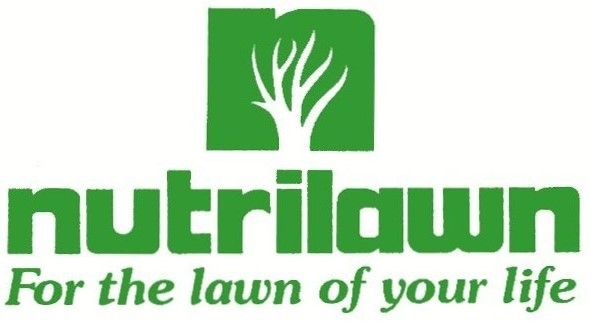BLOG
Blog
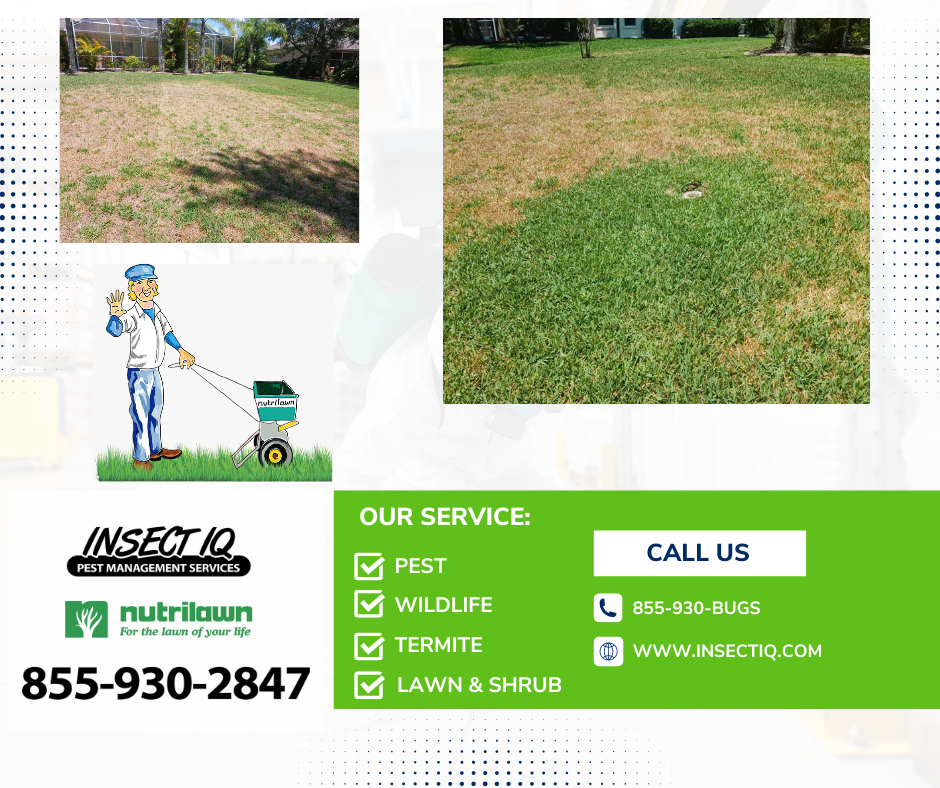
May 22, 2023
From the field, Operations Manager David Ketchum Thriving Lawns in Florida's Drought" Florida homeowners have the power to maintain lush and healthy lawns, even amidst drought or water shortage situations, irrespective of the water management districts (WMDs) imposing mandatory water restrictions. Surprisingly, the majority of turf damage arises from excessive watering, while watering restrictions generally offer ample irrigation for most types of lawngrass. Join me, David Ketchum, as I share practical maintenance practices that can effectively guide you in ensuring your lawn's resilience during periods of drought.
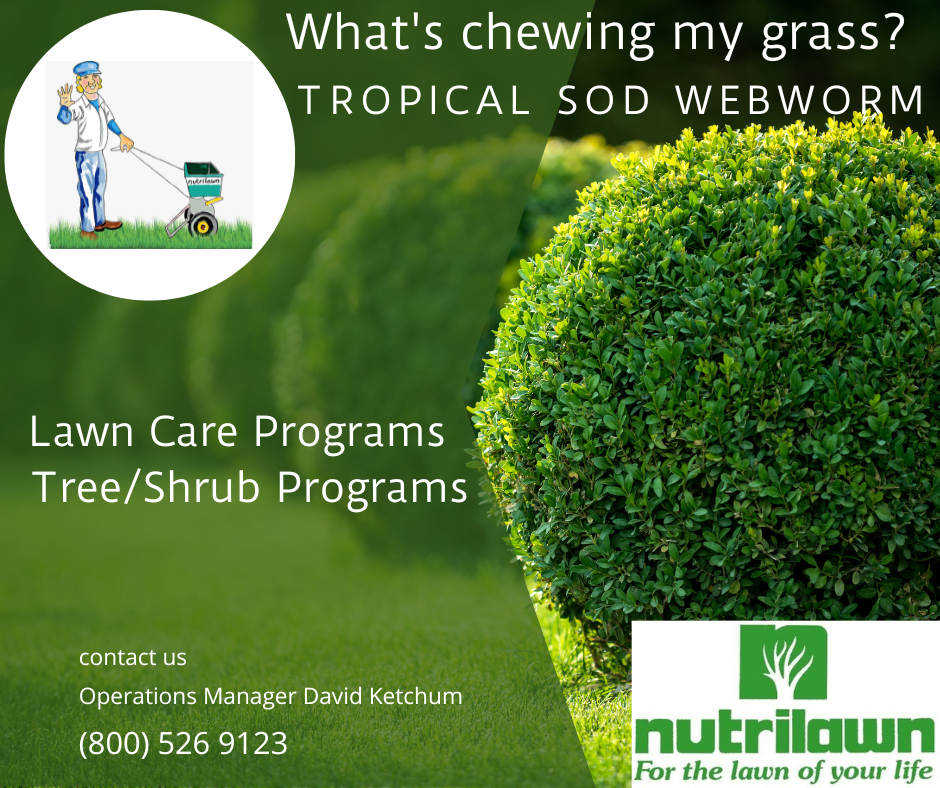
By Jonathan Simkins
•
April 16, 2023
Tropical Sod Webworm Larvae Might Be Feeding On Your Lawn If You See This If you have noticed that your lawn looks like it's been cut by a dull blade or like tops have been chewed by a cat and you have no idea what is causing the destruction, there is a good chance that it could be Sod Webworms. Sod Webworms are not worms at all, but rather the actual larvae of several species of moths that feed on turfgrass. Sod Webworms attack turfgrasses throughout the “tropical zone” which includes Tampa and parts of Southern Florida.
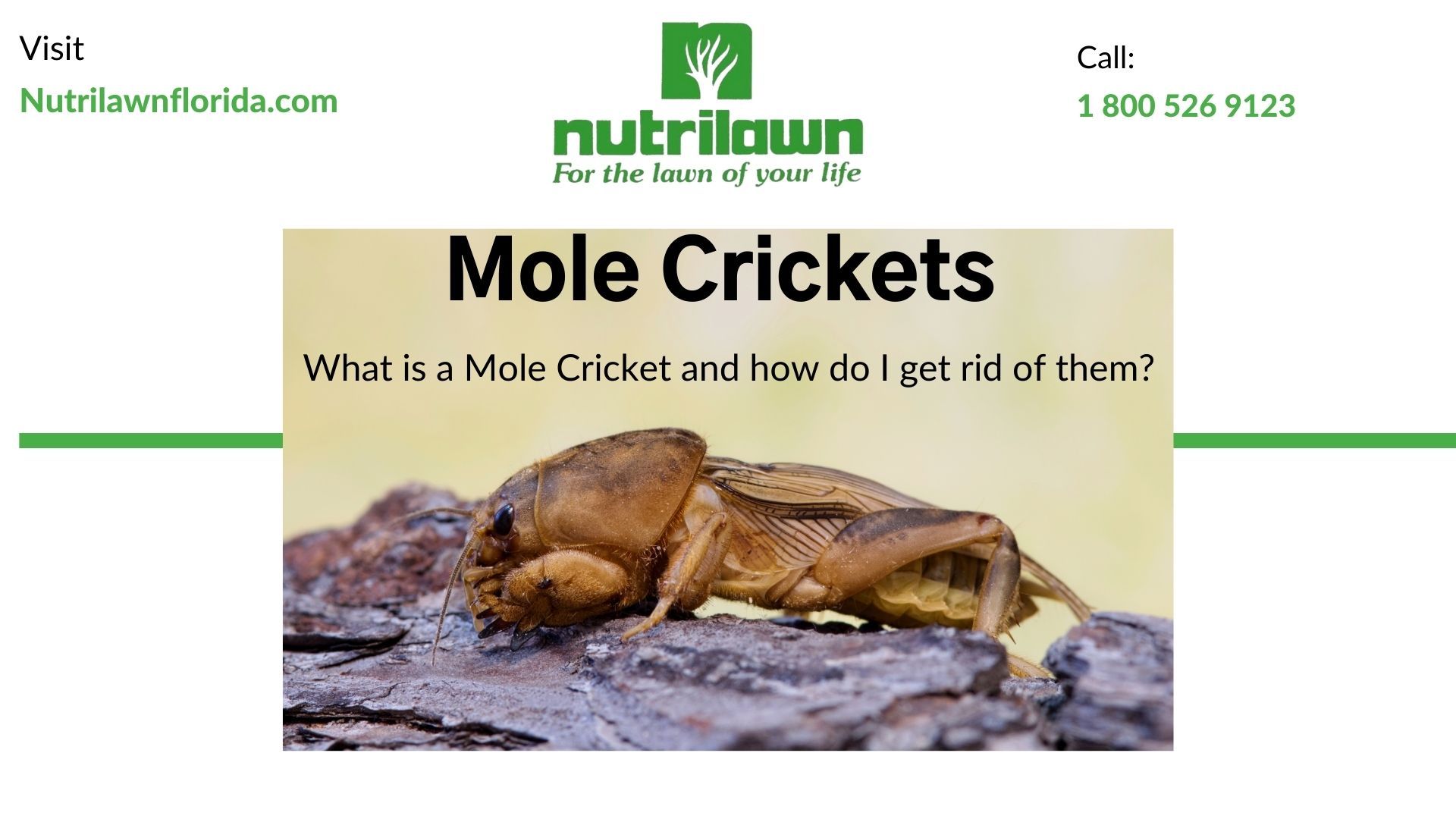
By Jonathan Simkins
•
April 14, 2023
Mole crickets start life as eggs, pass through several immature, nymph stages, and then become adults. Understanding this process helps give you the upper hand. One generation generally occurs per year, but lawns in the Deep South can see two. Mole crickets overwinter in soil as large, final-stage nymphs or adults, then emerge and mate when spring soil warms. Males die shortly after mating. Females dig up to 10 inches deep in moist soil and lay 100 to 150 eggs before they die. Depending on soil temps and soil moisture, eggs hatch in 10 to 40 days, with three weeks most common. By late spring and early summer, damage has started. With each molting stage, nymphs become larger, more destructive and more resistant to control. Warm-season grasses, such as Bermuda grass and Bahiagrass, are favorite targets. Because mole cricket nymphs strike during these grasses' peak growth, their damage often stays hidden until it's too late. Preventing mole cricket damage requires hitting the highly destructive nymphs before the prime time for treatment has passed – and before damage can be seen. This is actually easier than it may seem. Areas with adult activity in spring are excellent indicators of where eggs were laid – and where turf should be treated when nymphs hatch. Treating adults during their spring rituals can reduce tunneling and egg laying, but follow-up nymph treatments are essential to successful control. Nymphs are most vulnerable in late spring and early summer when they're newly hatched, close to the surface, and about 1/4-inch long. By the time they reach 1/2 inch in length a few weeks later, they burrow deeper into protective soil and become more effective at evading treatments. By monitoring spring activity and proactively treating those areas before nymph damage ever shows, you can hit these pests hardest and most effectively. Understanding the life cycle of mole crickets can be helpful in preventing damage to your lawn. Mole crickets start out as eggs, then go through several immature, nymph stages before becoming adults. In the Deep South, there can be two generations per year. They spend the winter in soil as large nymphs or adults and then emerge and mate in the spring when the soil warms up. After mating, male mole crickets die, while females dig up to 10 inches deep in moist soil to lay 100 to 150 eggs before they pass away. Depending on the temperature and moisture of the soil, the eggs hatch in 10 to 40 days, with three weeks being the most common. Damage usually starts in late spring or early summer. As the nymphs go through each molting stage, they become larger, more destructive, and more resistant to control. Warm-season grasses, such as Bermuda grass and Bahiagrass, are particularly vulnerable to mole cricket damage. To prevent damage, it's important to treat the nymphs before they become too big and destructive. Monitoring activity in the spring and treating areas where adults were active can help you target those areas where the eggs were laid. Treating adults during their spring rituals can help reduce tunneling and egg laying, but follow-up nymph treatments are necessary for effective control. Nymphs are most vulnerable in late spring and early summer when they're newly hatched, close to the surface, and about 1/4 inch long. It's important to monitor for spring activity and treat those areas proactively before the damage becomes visible. By doing this, you can effectively control mole crickets and keep your lawn healthy and beautiful. Here at Nutrilawn we use a chemical that is an insecticide that contains the active ingredient clothianidin, which is a neonicotinoid insecticide. It is effective against a wide range of insects, including mole crickets. The insecticide works by disrupting the nervous system of the mole cricket, which leads to paralysis and eventual death. When applied to the lawn, this chemical is absorbed through the roots of the grass and translocated to all parts of the plant, including the roots. This makes it an effective treatment for mole crickets that feed on the roots of the grass. The insecticide remains active in the soil for an extended period, providing ongoing protection against mole crickets and other pests. If you are starting to see any Mole Crickets, Chinch Bugs, Sod Web Worms or are simply just looking for a lush lawn, give Nutrilawn a call and let’s see if we can get you the Lawn of you Life! www.NutrilawnFlorida.com

By Jonathan Simkins
•
March 15, 2023
Granular fertilizer is a type of dry fertilizer that comes in a granular form. It is made up of small granules that are designed to be spread evenly across the lawn or garden bed. Granular fertilizers are often preferred over liquid fertilizers because they are easier to store, apply, and provide a slow-release of nutrients to plants. Granular fertilizer is typically composed of three main nutrients: nitrogen, phosphorus, and potassium. These nutrients are essential for plant growth and are often listed on the packaging as N-P-K, with each number representing the percentage of that nutrient in the fertilizer. For example, a 20-10-10 fertilizer would contain 20% nitrogen, 10% phosphorus, and 10% potassium. The best time to apply granular fertilizer to your lawn depends on the type of grass you have and your climate. In general, it is recommended to apply granular fertilizer during the growing season when the grass is actively growing. For cool-season grasses, this is usually in the early spring and fall, while for warm-season grasses, it is in the late spring and summer. When applied to the lawn, granular fertilizer provides a slow-release of nutrients that are essential for plant growth. Nitrogen, for example, is important for promoting lush, green growth, while phosphorus is needed for root development and potassium helps improve the overall health of the plant. Granular fertilizers also improve the soil quality by adding organic matter, improving water retention, and promoting microbial activity. Overall, granular fertilizer is an effective way to provide the necessary nutrients for a healthy lawn. By understanding when and how to apply it, you can help ensure that your lawn remains green, healthy, and vibrant throughout the growing season. The time change and temperature changes associated with the transition from winter to spring make it an ideal time to apply granular fertilizers to your lawn and garden. As the days become longer and temperatures begin to rise, plants start to awaken from dormancy and begin to grow actively. This means they require more nutrients to support their growth and development. Granular fertilizers are a slow-release type of fertilizer that slowly release nutrients over time, providing a steady supply of nutrients to plants throughout the growing season. Applying granular fertilizers now, as the weather warms up, ensures that your plants have the nutrients they need to grow healthy and strong. Moreover, applying granular fertilizers after the time change allows for better absorption of the nutrients since the plants will have more sunlight available to facilitate their metabolic processes. The soil temperature also increases during this period, which enhances nutrient uptake and utilization by the plants. In summary, laying down granular fertilization during the time change and temperature changes in spring is ideal because it provides your plants with the essential nutrients they need to grow strong and healthy, and it takes advantage of the optimal growing conditions of the season. If you want to ensure that your lawn and garden have the nutrients they need to grow healthy and strong this spring, don't wait any longer! Contact Nutrilawn today at 1-800-526-9123 or visit their website at Nutrilawnflorida.com to learn more about our fertilization services and how we can help you achieve a lush, vibrant lawn and garden.

By Jonathan Simkins
•
March 1, 2023
Preparing a lawn for spring can be a daunting task, as it often requires a lot of time, effort, and expertise to ensure that the lawn is healthy, vibrant, and ready to thrive in the warmer weather. This process can include tasks such as removing debris, testing the soil, aerating the lawn, fertilizing, and seeding, among others. Furthermore, different types of grass and soil require different treatments, making it challenging for homeowners to know exactly what their lawn needs. As a result, many homeowners struggle to effectively prepare their lawn for spring, leading to a less-than-optimal lawn appearance and potentially costly repairs. This highlights the need for effective and accessible lawn care solutions that can help homeowners properly prepare their lawns for spring and maintain a healthy and attractive lawn throughout the growing season. Here are a couple of ways that you can make sure you get a nice green lawn this coming Spring! Clean up debris: Start by cleaning up any debris that has accumulated on your lawn during the winter, such as fallen branches, leaves, and twigs. Rake the lawn to remove any dead grass, as well as to help loosen the soil. Aerate the soil: Aerating the soil helps to promote healthy root growth and allows water and nutrients to penetrate the soil more easily. You can rent an aerator or hire a lawn care professional to do this for you. Overseed: Over time, your lawn may become thin and patchy, making it more vulnerable to weeds and pests. Overseeding involves spreading new grass seed over your existing lawn to fill in any bare spots and promote thicker, healthier growth. Fertilize: Fertilizing your lawn in the spring provides essential nutrients that help it grow lush and green. Look for a slow-release fertilizer that provides a balanced mix of nitrogen, phosphorus, and potassium. Water: Water your lawn deeply once a week, rather than shallowly several times a week. This helps to encourage deep root growth, which in turn makes your lawn more drought-resistant. Water early in the morning to reduce evaporation and prevent fungal growth. Mow regularly: Mowing your lawn regularly helps to promote healthy growth and prevent weeds. Set your mower blades to a height of around 2-3 inches, and avoid cutting off more than one-third of the grass blades at a time. Control weeds: Spring is the ideal time to apply pre-emergent herbicides to prevent weeds from taking hold. If you do notice weeds starting to grow, pull them up by hand or use a targeted herbicide. By following these tips, you can help your lawn green up and thrive in the spring. Remember to keep up with regular maintenance throughout the growing season to ensure your lawn stays healthy and beautiful. Nutrilawn can help you with 3 out of 7 of these things. Here are three things we can assist with in trying to get a luscious green lawn. Water Recommendations: Proper watering is essential for a healthy lawn. Nutrilawn can help you determine the correct amount of water your lawn needs, depending on factors such as weather conditions, soil type, and the type of grass you have. They can also provide recommendations on the best time of day to water your lawn and the most efficient watering techniques. Lawn Fertilizing: Fertilizing is an important part of lawn care because it provides essential nutrients to the grass, which promotes healthy growth and improves the overall appearance of your lawn. Nutrilawn can help you determine the right type and amount of fertilizer your lawn needs, based on its unique characteristics. They can also provide you with a schedule for fertilizing your lawn, to ensure that it gets the right amount of nutrients at the right time. Weed Control: Weeds can be a major problem for lawns because they can compete with the grass for water and nutrients, and they can also make your lawn look unsightly. Nutrilawn can help you identify the types of weeds that are present in your lawn and recommend the most effective weed control strategies. This may include using herbicides or other treatments to eliminate weeds, as well as implementing preventative measures to minimize the risk of future weed growth. Overall, Nutrilawn can provide you with a comprehensive lawn care program that includes water recommendations, fertilizing, and weed control, to help you achieve a green, healthy, and beautiful lawn for this coming spring! Our team of experts has the knowledge, experience, and tools needed to transform your lawn into a beautiful and healthy oasis. We operate in Hillsborough, Pinellas, and Pasco Counties, and are ready to help you achieve the lawn of your dreams. Call us today at 1-800-526-9123 or visit our website at https://www.nutrilawnflorida.com to learn more and schedule your lawn care program today!

By Jonathan Simkins
•
February 22, 2023
Since 1995, for over 28 years, David Ketchum has been a vital part of the Nutrilawn team, serving as the operation manager. He has dedicated himself to learning everything there is to know about lawn care, and he is proud to say that he learns something new every day. David has learned about a variety of topics throughout his career at Nutrilawn, including soil science, insect metamorphosis, plant pathology, the science of horticulture, the environment, and daily dealing with the different types of nutrient requirements for lawns and turfgrass. Soil science is an important part of lawn care because it helps to determine the type of soil that is present and what nutrients it needs to support a healthy lawn. David has studied different types of soil and has learned how to make soil more fertile by adding the right type of nutrients. Insect metamorphosis is the process by which insects change from one form to another. David has studied the different stages of insect metamorphosis and knows how to identify different types of insects that can damage lawns. This knowledge has helped him to create treatment plans that are effective at preventing insect damage. Plant pathology is the study of plant diseases. David has studied the various diseases that can affect lawns and has learned how to identify and treat them. This knowledge is vital to maintaining a healthy lawn. The science of horticulture is the study of plants and how to grow them. David has studied the various types of grasses and turfgrass and knows how to care for them to ensure they stay healthy and beautiful. David has also learned about the environment and how it affects lawns. He knows how to care for lawns in different weather conditions and understands how different types of plants and grasses respond to environmental changes. Finally, David deals with the different types of nutrient requirements for lawns and turfgrass. He knows which nutrients are needed for healthy growth and how to apply them in the right amounts. Through his many years of experience and his dedication to learning, David has become an expert in lawn care. He is passionate about what he does, and he takes pride in helping his clients to maintain healthy, beautiful lawns. If you want to learn more about Nutrilawn's lawn care programs and how they can help you achieve a healthy, beautiful lawn, we invite you to visit NutriLawnFl.com or call 1-800-526-9123. Our team of experts, led by David Ketchum, is ready to help you create a customized lawn care plan that meets your unique needs. So why wait? Visit our website today and discover the Nutrilawn difference.
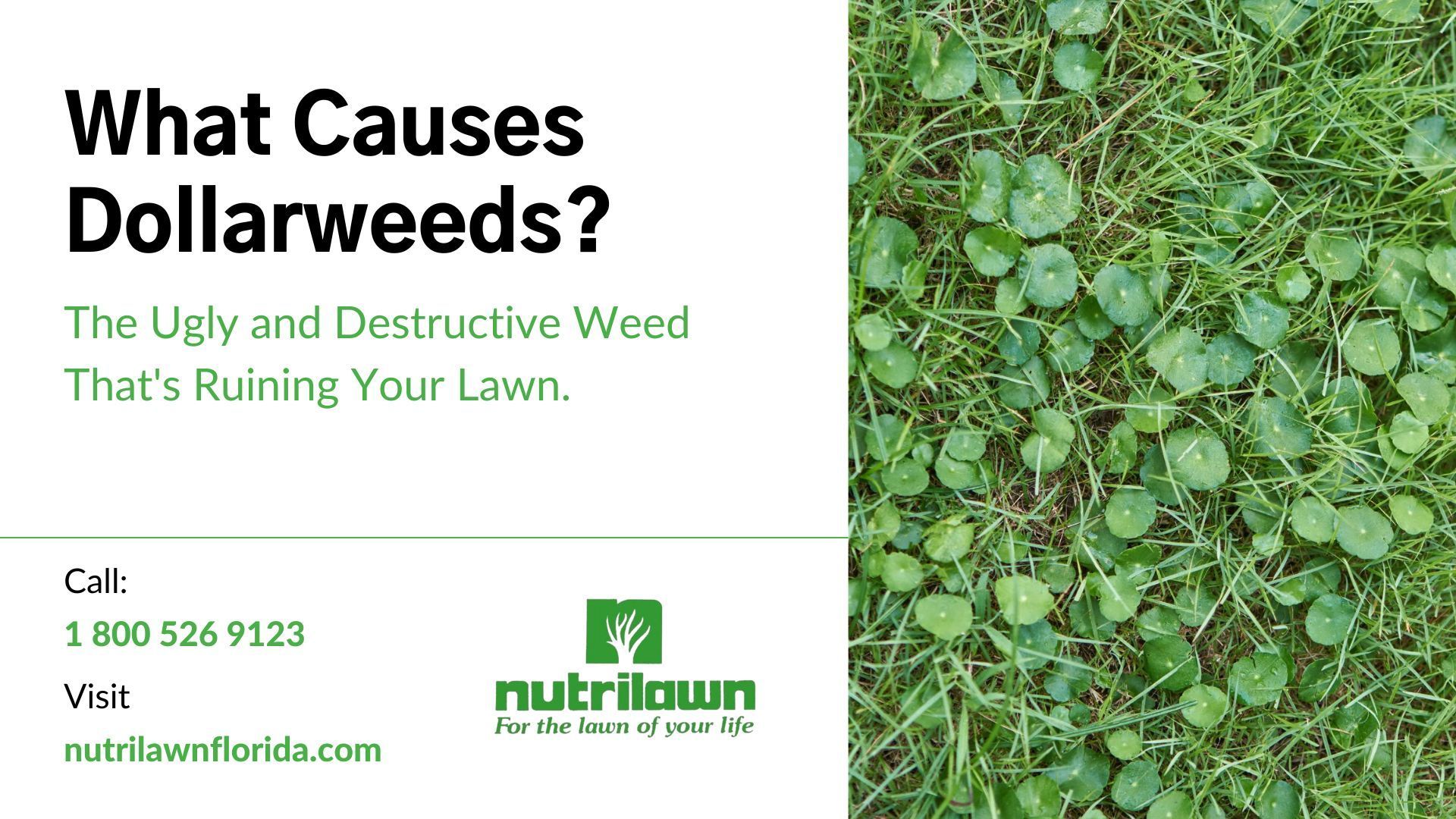
By Jonathan Simkins
•
February 15, 2023
Say Goodbye to Unsightly Dollarweeds with Nutrilawn As a lawn owner in the greater Tampa Bay area, you want your yard to be a source of pride and enjoyment. Unfortunately, dollarweeds can put a damper on that. Not only are these weeds unsightly, but they can also be destructive to your lawn. Dollarweeds grow in dense mats that can choke out your good grass and plants, and their shallow roots make them vulnerable to drought, disease, and pests. At Nutrilawn, we understand the frustration and disappointment that comes with a yard full of dollarweeds. That's why we've dedicated ourselves to providing top-quality lawn care services to homeowners in Hillsborough, Pinellas, and Pasco Counties. We're proud to be the go-to lawn care company in the area for reliable, effective, and affordable solutions to weed problems. Don't Waste Your Time on DIY Dollarweed Solutions If you're like many homeowners, you may have tried DIY solutions like hand-pulling or mowing to get rid of dollarweeds. However, these solutions are often ineffective in the long term. Hand-pulling may remove the visible plants, but it doesn't get rid of the roots, which can cause the weeds to come back even stronger. Mowing is a temporary fix at best, and the best DIY remedies, like vinegar or boiling water, can harm the good plants in your lawn. Nutrilawn: Your Trusted Solution to Dollarweed Problems That's where Nutrilawn comes in. Our lawn care program is specially designed to eliminate dollarweeds and promote healthy grass growth. We don't just use any herbicides or fertilizers; we use specialized products that are safe for your lawn and the environment. Our team of lawn care experts will create a customized treatment plan based on your lawn's specific needs, including regular maintenance services to keep your lawn weed-free year-round. Plus, Nutrilawn is a full-service company, and we can bundle your lawn care and pest control into one package, saving you time and money. Our pest control services are top-notch, and we use only the latest and most effective methods to keep your home and lawn pest-free. When you choose Nutrilawn for both your lawn care and pest control needs, you'll save 10% on your services. When you choose Nutrilawn, you can be confident that you're working with the best in the business. Our technicians are trained and certified in the latest techniques and products, and we're always researching and developing new methods to ensure the highest level of service possible. Plus, we use only the highest-quality equipment to ensure efficient and effective treatments every time. Say Goodbye to Dollarweeds, Hello to a Beautiful Lawn! With Nutrilawn, you can say goodbye to unsightly dollarweeds and hello to a beautiful, healthy lawn that you'll be proud to show off. Our comprehensive lawn care services will transform your yard into the envy of the neighborhood. From fertilization and weed control to pest services and plant care, we have everything you need to keep your lawn looking its best. But our commitment to excellence goes beyond just the services we provide. We're dedicated to delivering exceptional customer service as well. We'll work with you every step of the way to ensure that you're satisfied with our work, and we'll be available to answer any questions you may have along the way. Contact Nutrilawn today by calling 1-800-526-9123 to schedule a consultation. Let's work together to create a lawn you'll love!
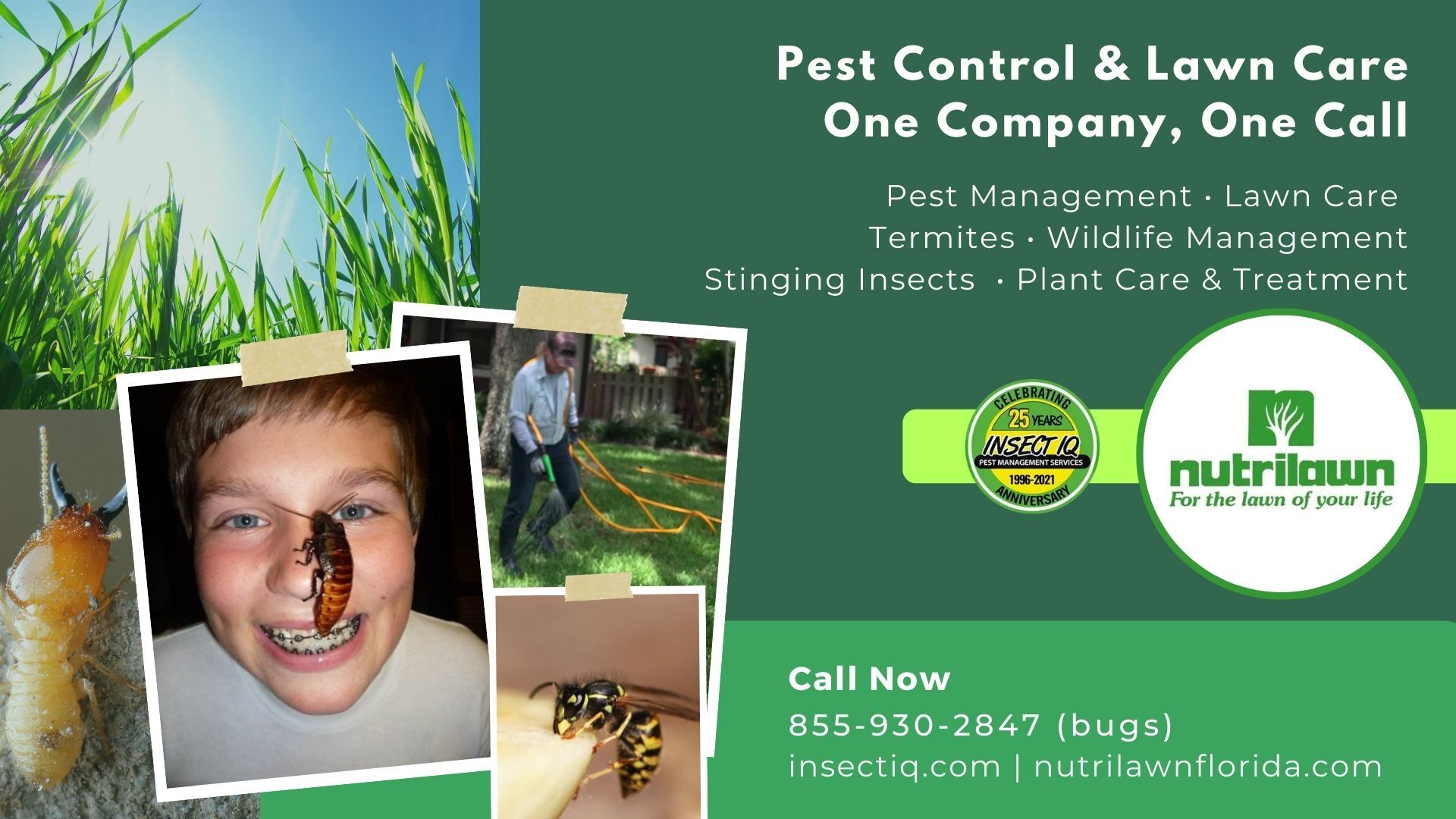
By Jonathan Simkins
•
September 1, 2022
Pest Control & Lawn Maintenance—One Company, One Call You want convenience when it comes to your outdoors. You want one company that can handle it all. You want one company, one price, one service provider. That’s what we deliver at Insect IQ / Nutrilawn. Your lawn care and pest control service providers in one!
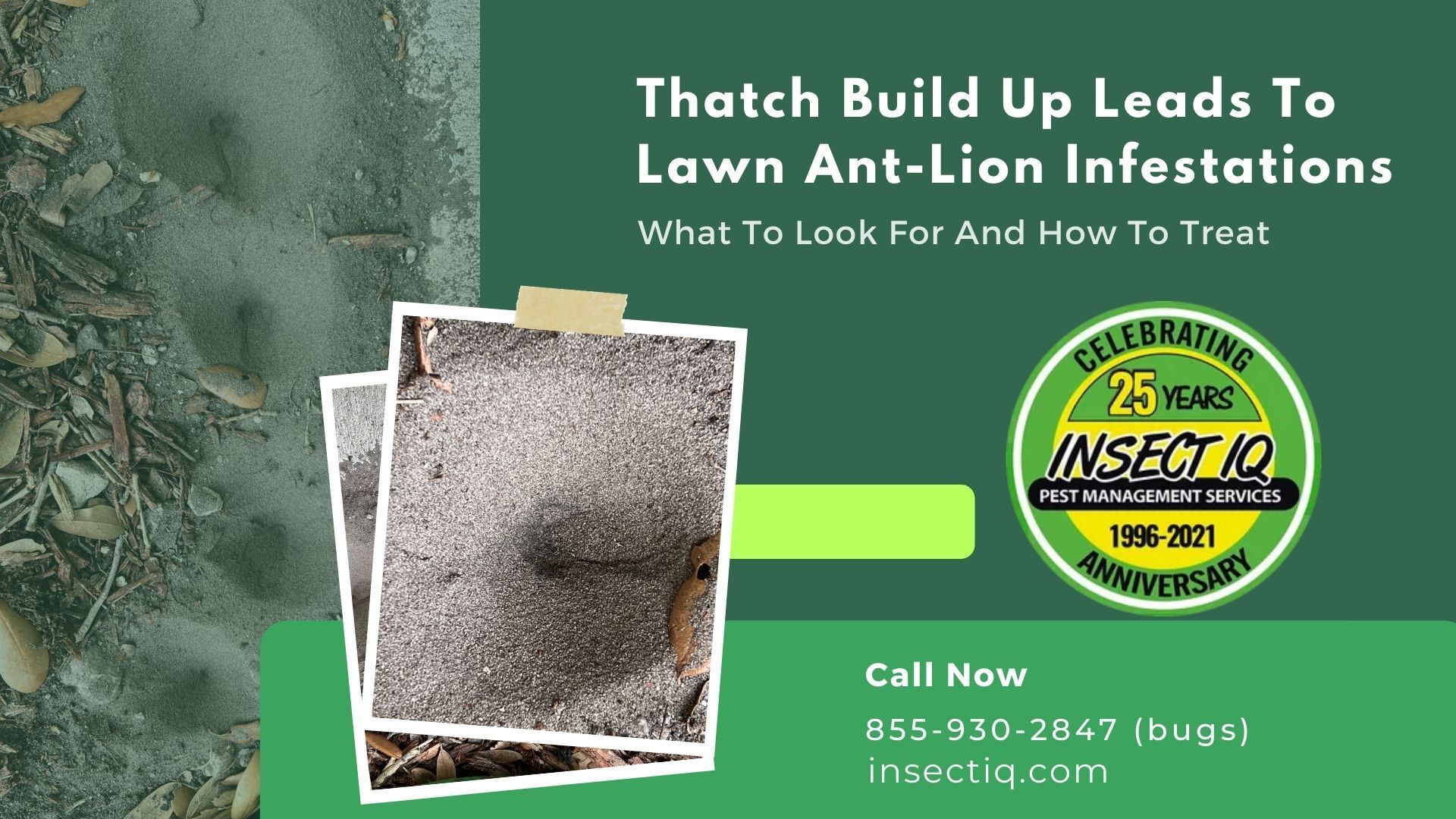
By Jonathan Simkins
•
May 31, 2022
Thatch Build Up Leads To Lawn Ant-Lion Infestations | What To Look For And How To Treat If you have noticed brown zones between vegetation or strange growth in various parts of your lawn chances are your lawn has a thatch build-up. This thatch can be caused by waiting too long between mowings, too much shade on your lawn, or a variety of other lawn maintenance issues. If left unattended, these spots become breeding grounds for a variety of ants and other bugs. Most notably this time of year, the ant-lion. Ant-lions are a type of insect that dig holes in the lawn and then lie in wait for unsuspecting insects or small animals.
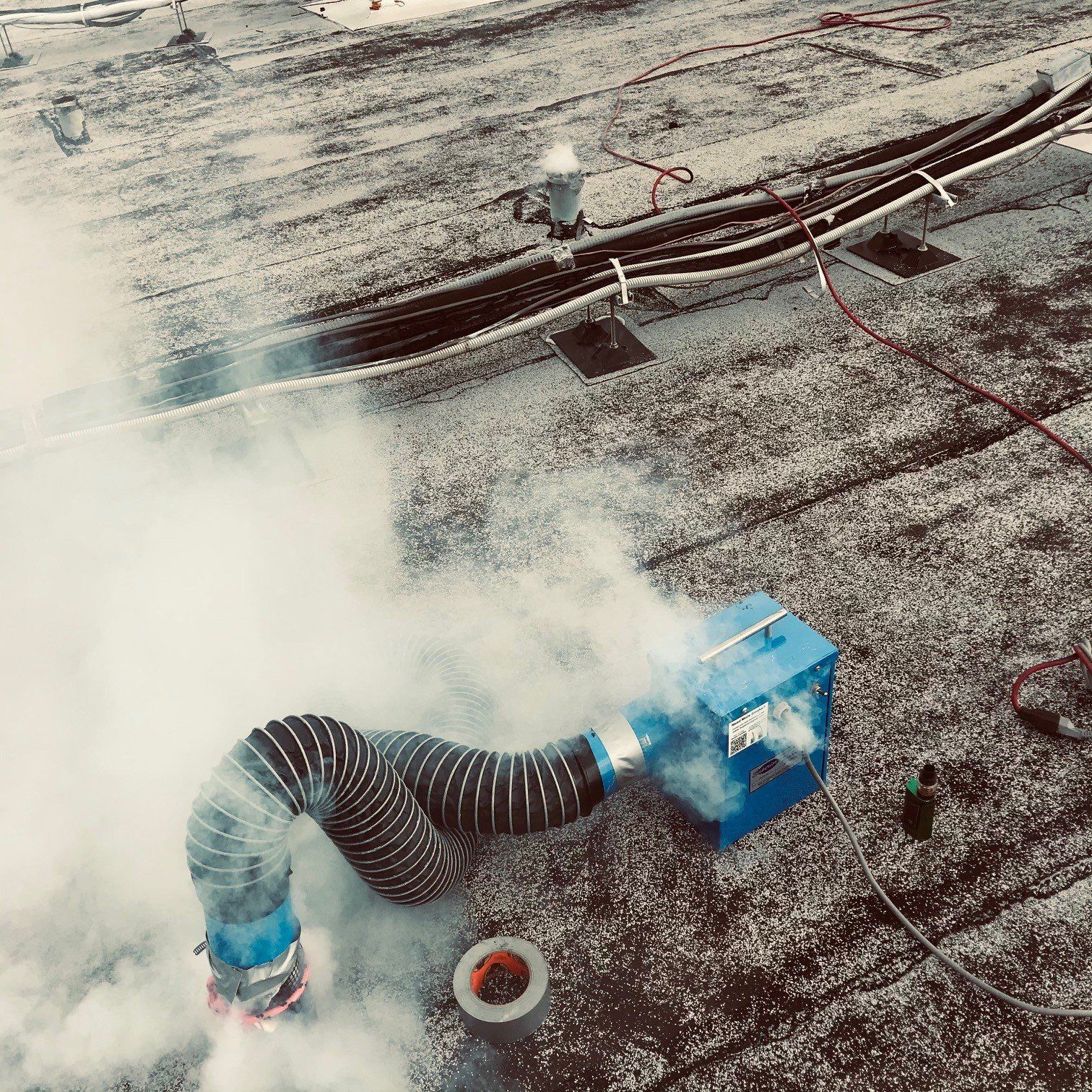
By Jonathan Simkins
•
May 28, 2022
Florida Roof Rats Infest Largo Condo - Smoke Candles To The Rescue Over the last 7 months, other pest control operators had been trying various methods to control the rats, but with limited success. Then we took over. The most successful method for long-term pest control is an integrated approach i.e. a combination of methods that work together such as baiting and trapping along with exclusion or sealing up cracks or holes in the building. We would like you to know that we use a combination pest control approach (exclusion/sealing cracks/sewer traps) in addition to chemicals, lights, and devices that cycle on and off at set intervals (traps.) We also suggest preventative steps that you can take to avoid rodent activity such as sealing food storage areas and keeping garbage containers covered until collected.
Working Hours
Monday through Friday: 7:30 am-4:30 pm
Copyright © 2021 All rights reserved.
